Use Plyometric Exercises To Make Explosive Gains
Do plyometric moves to build muscle strength
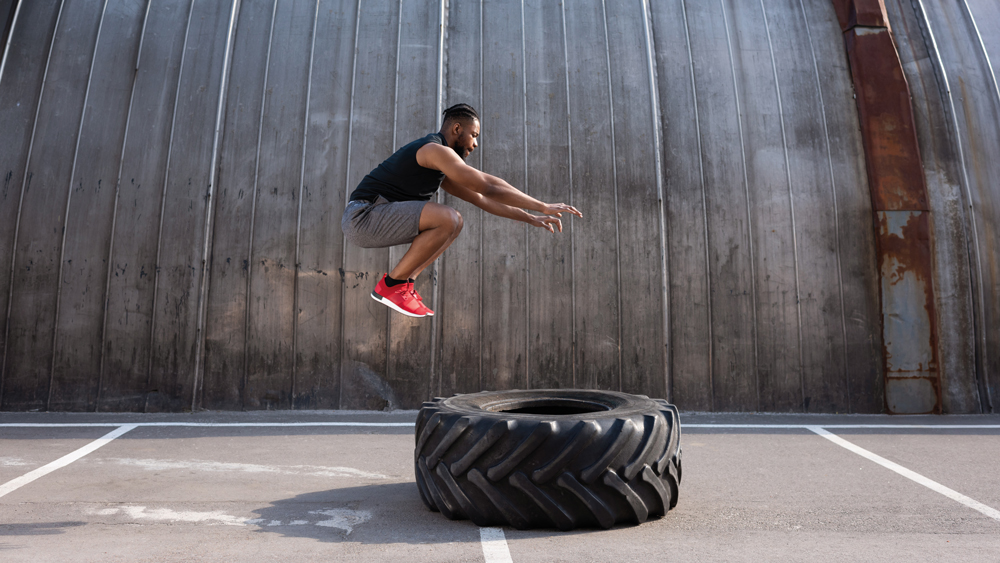
In the pursuit of gaining muscular size and strength, most people fixate on lifting weights. And that’s why most people fail to achieve their muscle mass and raw power potential. Including bodyweight plyometric moves – such as box jumps or clap press-ups – in your training is a highly effective way to increase both muscular size and power output, according to a study published in the Journal Of Strength And Conditioning Research. And the best bit (apart from not needing any kit) is that subjects who did plyometrics once or twice a week increased their 20m sprint time and maximal strength more than those who did four sessions.
But that’s not where the benefits end. The finding of a new study that suggests integrating balance drills with plyometric exercises, such as jump squats or vertical jumps, results in a “significant and substantial” improvement in muscle strength, power and speed. In the study, published in the Journal Of Sports Science And Medicine, subjects followed a balance and plyometric training programme, exercising on an unstable surface along with a series of jumping and hopping exercises. After eight weeks, performance in key athletic tests – including 10m and 30m sprints, and vertical jumps – improved by an average of 30%. Boost your performance by including some jump squats and Bosu ball squats as part of a legs session warm-up.
“Adding plyometric exercises to your routine will not only increase your athletic capabilities, it will also improve muscle mass by recruiting your fast-twitch fibres,” says trainer Alex Gildea. “Start by keeping the rep count low to perfect your technique and avoid injury.”
Box jump

Stand facing a box or other type of stable raised surface that’s about the same height as the top of your shins. With your feet hip-width apart, do a quarter squat then swing your arms back while simultaneously exploding off the ground and onto the box. Land with both feet, then step back down and repeat. Do three sets of five reps, resting for one to two minutes between sets.
Tuck Jump
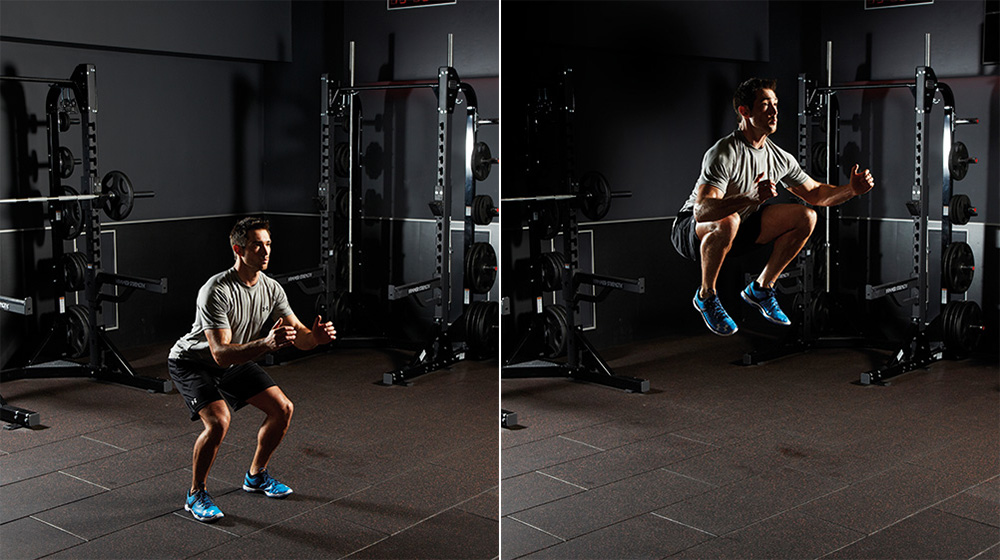
From a standing position, drop into a shallow squat, then explode up off the ground. Keep your back straight and bring your knees as close to your chest as possible. Land softly then either bounce on the balls of your feet once before taking off again, or for a harder challenge go straight into another jump as soon as you land.
Frog Squat Jump
Stand with your feet wider than shoulder-width apart. Drop into a deep squat and sit back with your hands touching the ground between your feet for balance (like a frog). Then jump as high as you can and raise your hands above your head. Land softly and repeat.
Skater Jump
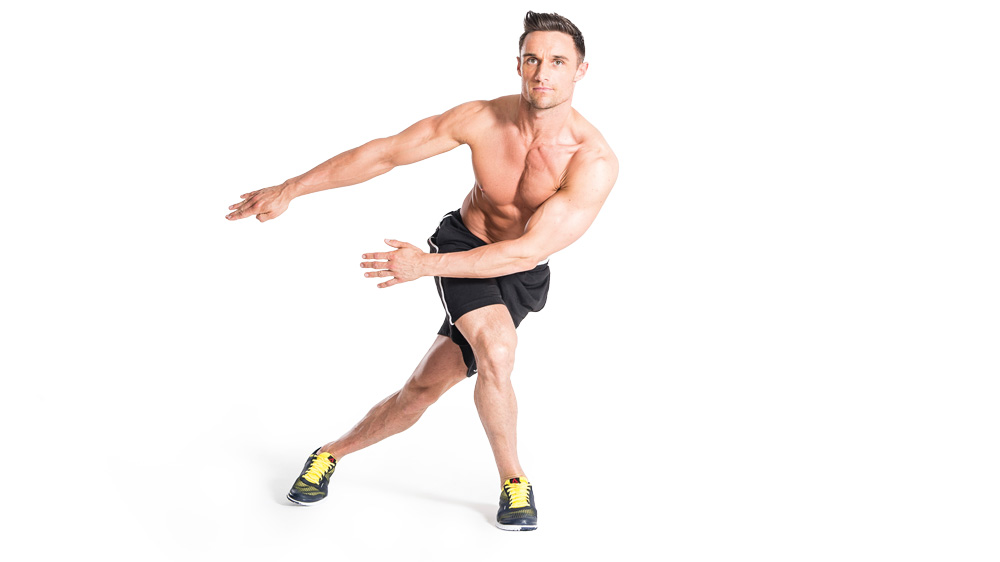
From a standing start, move your weight onto your right foot and move your left foot behind your right – the toes of your left foot should touch or hover slightly above the ground. Then jump laterally to your left and, as you land, bring your right foot behind your left. Repeat the movement at pace.
Sign up for workout ideas, training advice, reviews of the latest gear and more.
Broad Jump
Stand with your feet hip-width apart, then drop into a shallow squat and swing your arms back. Swing your arms through and jump forward as far possible. This simple but effective exercise acts as good measure of your progress when aiming to build explosive power in your legs – after a few weeks of plyometric exercises you should notice your broad jumps cover a greater distance.
See related
Standing Triple Jump
From a standing start leap forward as far as possible and land on one foot, then continue straight into another forward jump and land on the other foot. Then – you guessed it – go straight into a third jump and land on both feet. Even if you never intend to beat Jonathan Edwards’s unassailable triple jump world record, this is a great exercise for building power in both legs.
Jump squat
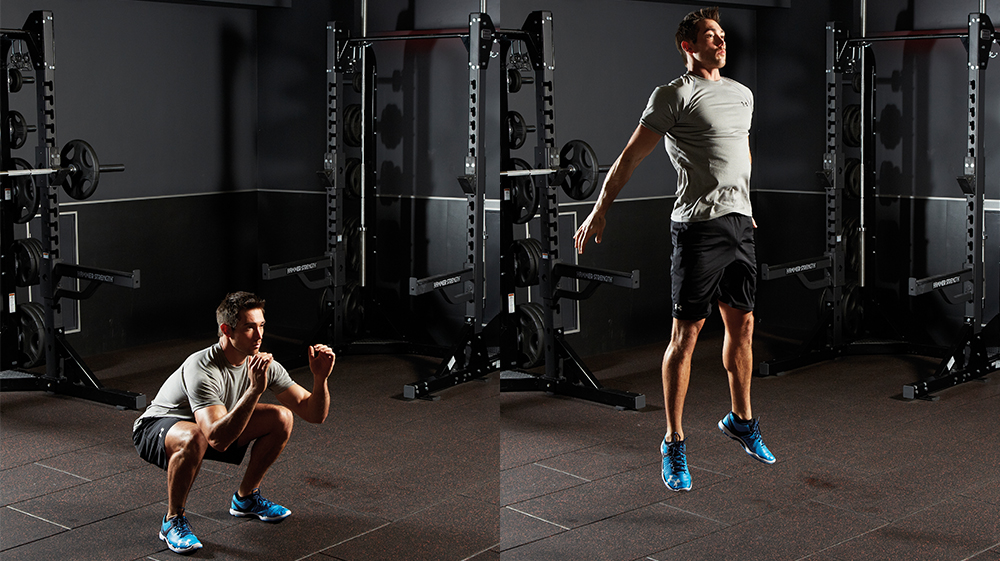
Squat down and load tension in your legs and glutes, then jump up powerfully, swinging your arms for momentum. Push your hips forwards at the top and exhale. Don’t roll your knees inwards when you land. Do 5-10 reps for 3-5 sets, resting 60sec between them.
Jump lunge

Start in a split stance and load tension on your front leg with your core engaged. Jump up powerfully and switch legs in mid-air to land with your other leg in front. Don’t let your knees go ahead of your toes. Do 5-10 reps per leg for 3-5 sets, resting 60sec between them.
Press-up burpee
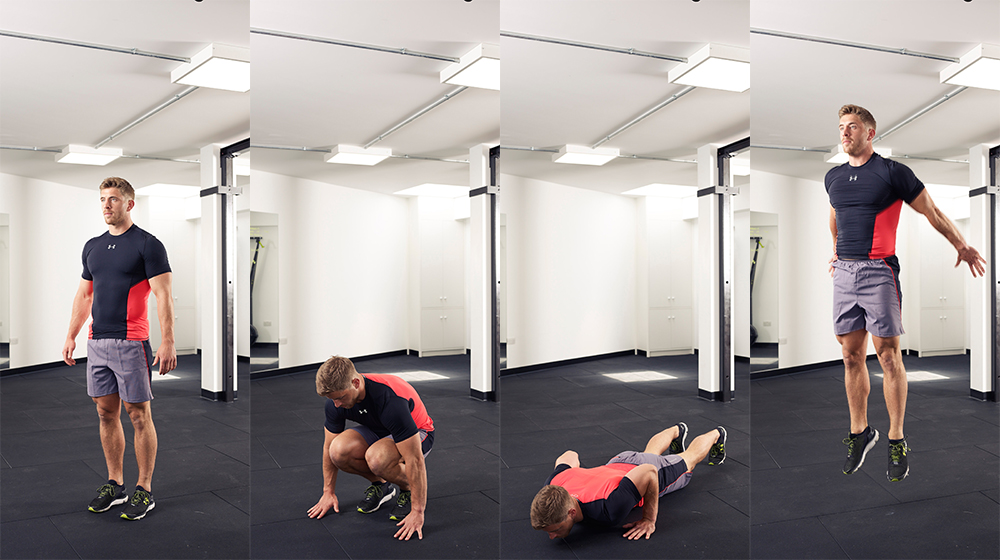
Squat down, jump your feet back and do a press-up. From there bring your knees towards your chest, then jump up powerfully. Land softly by bending your knees and go straight into the next rep. Do as many reps as you can for between 30sec and 60sec.
Clap press-up
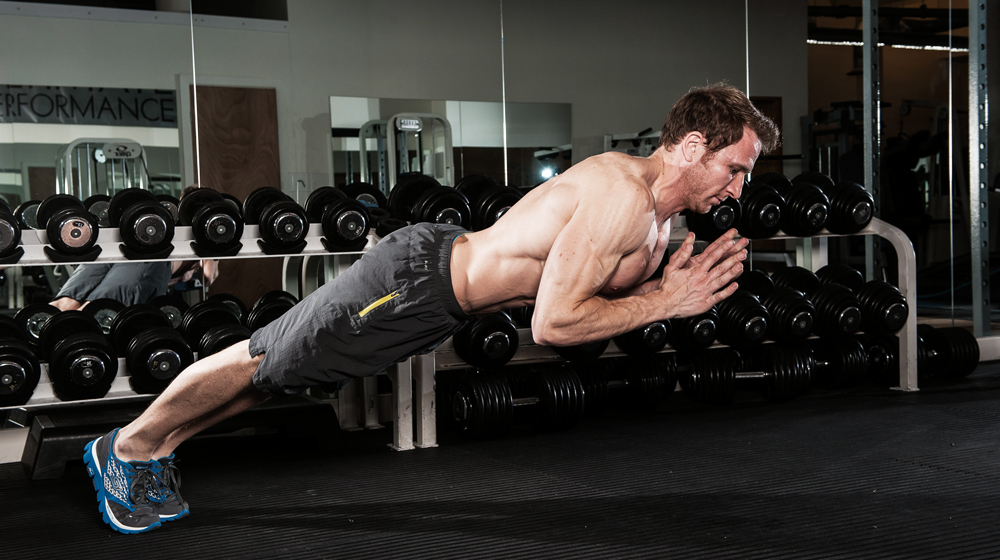
This move done in the same way as a normal press-up – except you explosively push yourself up off the floor, going high enough to lift your hands up from the floor, clap and put them back down on the floor (or you’ll land flat on your face). Focus on keeping your core tight and pushing down as hard as possible to lift your torso up high into the air. Build up strength by doing one clap press-up at the start of each set, then work up to doing five sets of three reps, resting for one to two minutes between sets.
Coach is a health and fitness title. This byline is used for posting sponsored content, book extracts and the like. It is also used as a placeholder for articles published a long time ago when the original author is unclear. You can find out more about this publication and find the contact details of the editorial team on the About Us page.

